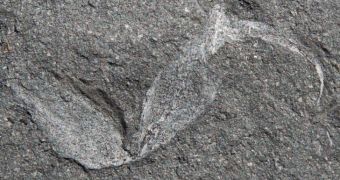Dr. Robert Gess, a postdoctoral researcher from Wits University, has recently discovered the fossilized remains of a scorpion that lived millions of years ago.
Detailing on his findings, the researcher argues that, according to his estimates, the scorpion's remains are nearly 360 million years old.
He found them while exploring the rock of the Devonian Witteberg Group near Grahamstown in the Eastern Cape.
Interestingly enough, the fossilized remains belong to a previously undocumented species, which Dr. Robert Gess has named Gondwanascorpio emzantsiensis.
The researcher explains that his findings prove that, contrary to previous assumptions, the ancient continent of Gondwana became populated at about the same time as the continent of Laurasia started teeming with life.
“Evidence on the earliest colonisation of land animals has up till now come only from the northern hemisphere continent of Laurasia, and there has been no evidence that Gondwana was inhabited by land living invertebrate animals at that time.”
“We now know that by the end the Devonian period Gondwana also, like Laurasia, had a complex terrestrial ecosystem, comprising invertebrates and plants which had all the elements to sustain terrestrial vertebrate life that emerged around this time or slightly later,” the researcher explains.

 14 DAY TRIAL //
14 DAY TRIAL //